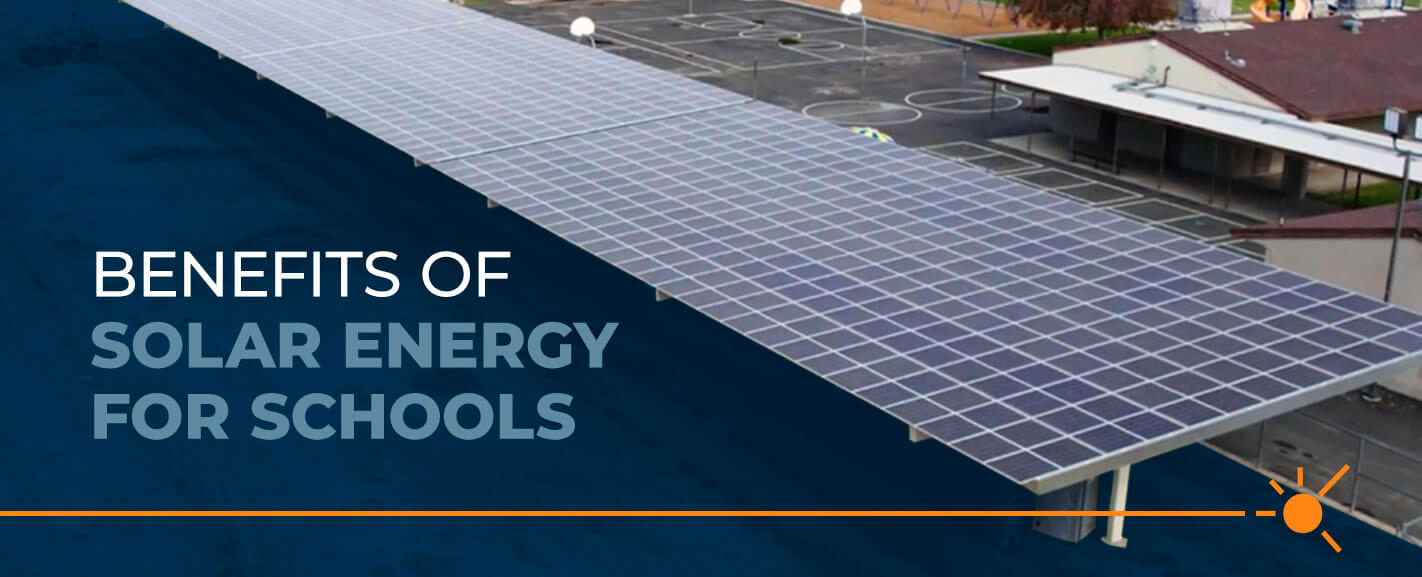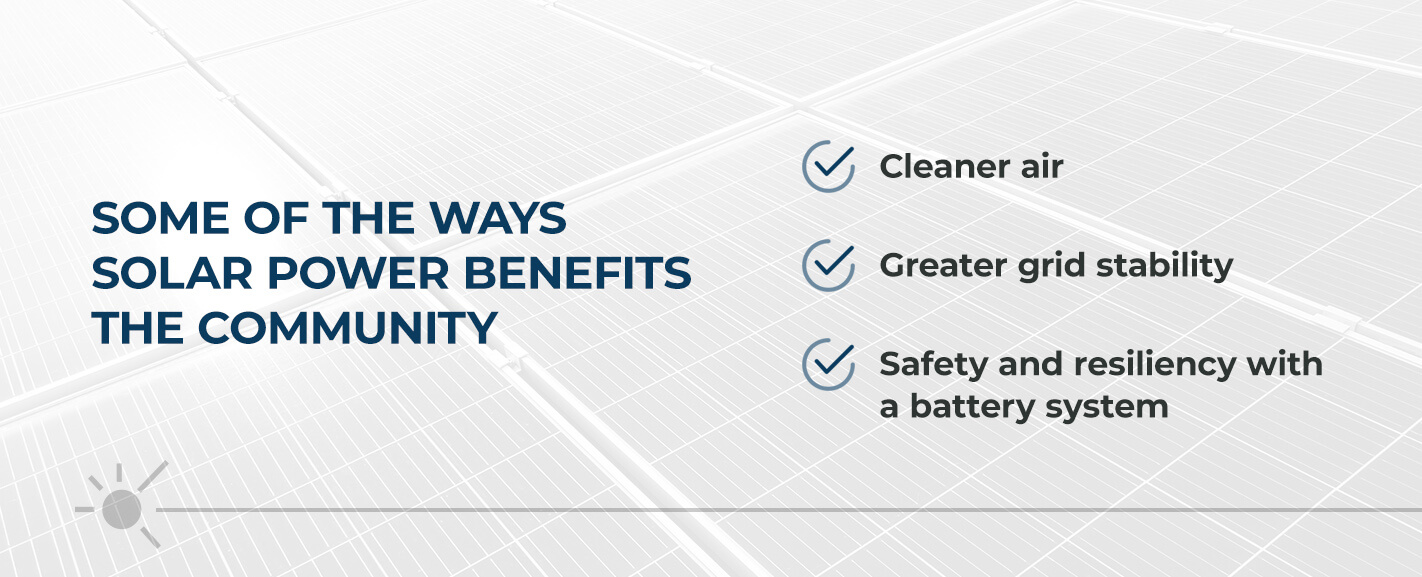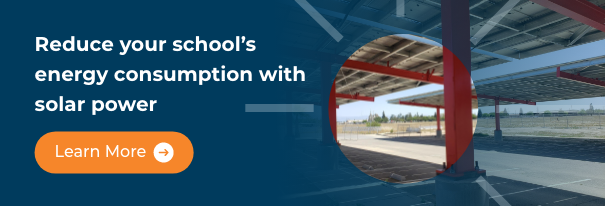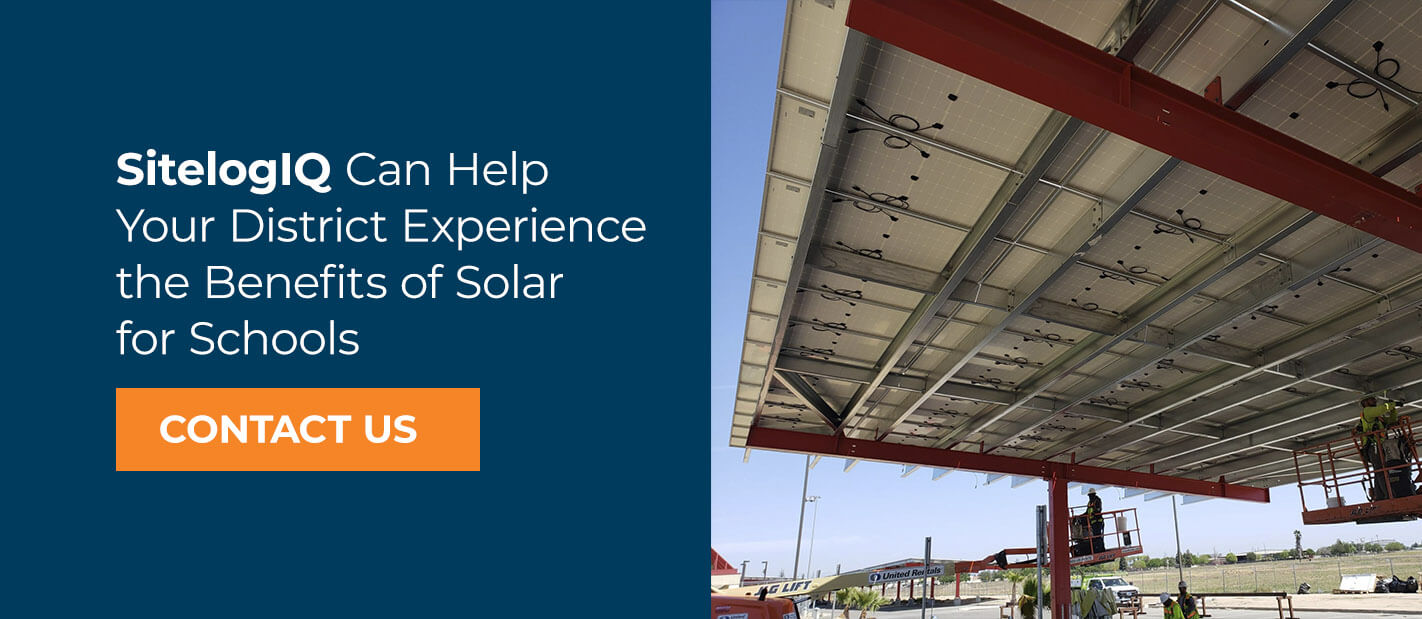
The highest budget expenses for many school districts are energy and utility costs. Students and faculty depend on reliable energy to keep lights on and keep students comfortable during temperature extremes. In short, energy facilitates a healthy learning environment, ensures students grow in their education, and helps teachers use essential resources to achieve those goals.
Today, existing energy options can provide new and improved benefits to your district’s K-12 school facilities. One alternative energy source you should consider is solar. But what are the benefits of solar energy for schools? Discover how solar energy can drastically improve your facilities’ ability to optimize consumption while becoming operationally and environmentally sustainable.
What Is Solar for Schools?
The first step toward harnessing solar energy for your school is understanding what solar energy is. By now, you may be aware that solar energy involves converting the sun’s rays into a source of usable electricity through photovoltaic (PV) panels that capture solar radiation. As the sun shines on the PV panels, the complete solar PV system converts the sunshine into useful forms of energy for your facility.
Most solar technologies are disconnected from the power grid, giving you a second, or alternative, source of energy. Solar energy can supplement your grid energy consumption and, when coupled with an energy storage system, provide a stable source of backup energy when the grid goes down. Regardless, if the sun is shining its rays on your solar panels — even on cloudy and rainy days — your solar energy system can provide your facilities with renewable, free, and environmentally friendly energy.
How Do Schools with Solar Energy Save Districts Money?
As solar has become abundant in use across all industries, the cost of solar technologies has become a more cost-effective investment. And with the power of solar and working with experienced energy professionals at SitelogIQ, you can begin saving thousands on operating expenses and focus more of your budget on other matters.
Optimize your building’s renewable energy performance by implementing a utility monitoring system, like mySiteIQ. Being able to track your facility’s energy savings in real time can arm you and your team with data to make better-informed decisions. Additionally, having visibility into how energy is used across your schools, can bring insight into your environmental impact.
How Does Solar at My School Benefit My Community?

Solar at your school can do more than serve your facilities, faculty, and students. The advantages of solar panels extend to the entire community surrounding your schools. Here are some of the ways solar power can help:
- Cleaner air: Solar energy is green energy. It produces zero emissions and reduces your reliance on the fossil fuel-burning energy grid, further contributing to cleaner air in your area.
- Greater grid stability: When school’s out, you can sell the solar energy your facilities produce to the grid through a community solar program.
- Safety and resiliency with a battery system: School buildings are some of the safest places during severe weather emergencies. This is even more true when your facilities use solar energy. If the grid were to go down, through the implementation of a community solar program, your local area could rely on your facilities’ solar power to charge their electronics, communicate with loved ones, and use electricity for other emergency-related tasks.
How Does Solar on School Campuses Help Students?
Students have the opportunity to learn the value of sustainability and how to make more environmentally friendly habits in their district’s actions toward generating renewable energies. Integrate your district’s energy consumption and solar generation to showcase the effect your K-12 community has on the learning environment. Students will learn how simple changes in their behaviors and habits can make a difference in reducing our impact on the Earth.
Solar panels on schools also help students learn more about environmental responsibility and renewable energy. They’ll see how solar energy works in real-time and understand why their school facilities use solar panels. They’ll carry this knowledge with them moving forward, which can turn more students into environmentally conscious citizens who care about sustainability in their personal lives.

How Do Schools Finance Solar and Why?
Many schools are looking to solar energy because of the positives it can bring, but may not be aware of all the available financing options. These options may be the key that would allow districts to save on capital expenses and redirect those funds for other needs and upgrades.
The good news is our SitelogIQ team can help identify opportunities for funding, especially funding associated with high-impact energy efficiency and health improvements. Here are some of the ways schools finance solar:
- Bonds and incentives: Use solar energy to shift your facilities’ energy consumption from a general budget expense to a capital expense. In doing so, you can leverage tax equity programs and bond measures to help pay for your district’s capital improvements in the form of solar energy. Note that public funding options like bonds are always changing. Talk with your vendor to ensure you’re making the most of the federal, state, and local government funding options available to you.
- Power purchase agreements (PPA): A PPA agreement has a third-party build, own, and maintain the solar energy system. The school using the system will then pay that third party to use the energy generated from it, which will give the district immediate cost savings as they rely less on the grid.
- Direct ownership: School districts in states that forbid PPAs can consider direct ownership for their solar power needs. In a direct ownership arrangement, the district fully owns its solar energy system. The district can still use bonds, debt services, and incentives to help pay for the initial expense.
- The recent passing of legislation for K-12 facility improvements: Both the Infrastructure Investment and Jobs Act (IIJA), known as the Bipartisan Infrastructure Law (BIL), and Inflation Reduction Act (IRA) were signed into law in the past two years. Each of these can be instrumental to providing students and staff improved health and safety through projects like installing solar.
How Can I Bring the Benefits of Solar to My School?
After learning more about solar and how it can improve your school district, you need to know how you can make this opportunity a reality. Here are some things to keep in mind if you are ready to begin the installation process:
- Reach out to Energy Professionals: Our SitelogIQ energy experts take a partnership approach in helping educators reach near and long-term district facility goals while focusing on the physical, functional, and educational needs of students.
- Support: You need the support of school faculty, students, parents of students, and the entire community to ensure a successful solar energy implementation process. Engage with your community with the help of our K-12 Leadership Engagement to raise awareness and build momentum for the project. By the time you begin the process, you will have greater support from all involved parties and more enthusiasm from stakeholders.
- Financing and regulations: Ensure you understand your state and local building codes, regulations, and incentives for your solar energy project. Decide which financing model will work for you, so you can move forward with confidence.
SitelogIQ Can Help Your District Experience the Benefits of Solar for Schools

SitelogIQ is ready to help your school district receive the benefits of K-12 solar energy generation. Our solutions can help you get the most out of your solar power and ensure a successful transition period. As your K-12 partner, we’re here to help you become operationally and environmentally sustainable, expand your budget, and get the most from solar energy. Contact us today to take the next step.


